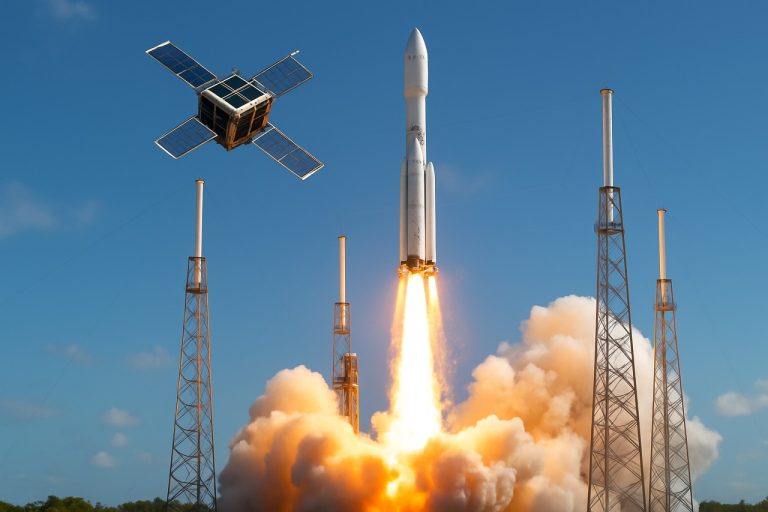
Global Landgrab for Space Eyes: International Demand for American Satellite Intelligence Explodes in 2025
Foreign governments are fueling a record-breaking boom in U.S. satellite imaging—reshaping the future of global intelligence and industry.
- $100M+: BlackSky’s recent seven-year subscription from an undisclosed foreign government
- 200+: Planet Labs’ satellites imaging the globe daily
- $230M: Largest known single deal—Planet’s 2025 agreement with an Asia-Pacific government
- 6: WorldView Legion satellites enabling real-time, sovereign imaging for customers
The once-secretive satellite intelligence world is bursting open. In 2025, American commercial space giants—like Maxar Intelligence, Planet Labs, BlackSky, and Capella Space—are racing to meet a rush of foreign demand. No longer just allies looking for a peek at satellite photos: entire nations now want their own “sovereign” access to the sky.
Why? Wars, shifting alliances, and the race for industrial dominance have made it clear: relying solely on American intelligence hand-me-downs is risky. Instead, countries from Europe to Asia and Africa are striking blockbuster deals with U.S. firms, buying imagery and analytical power once reserved for the world’s biggest superpowers.
Q: What’s Driving Countries to Buy American Satellite Eyes?
More nations are realizing that modern power lies far beyond tanks and fighter jets. Satellites can spot hidden oil deposits, anticipate crop failures, monitor borders in real-time, and catch illegal activity—day or night, rain or shine.
Recent conflicts, especially in Ukraine, have proven: commercial satellite imagery isn’t just helpful—it’s critical. Battles and humanitarian crises now unfold before the world’s eyes, streamed in near real-time, thanks to relentless fleets of commercial satellites.
How U.S. Companies Are Seizing the International Satellite Market
As Washington pares back federal spending, satellite titans are going global. Maxar now staffs offices from London to Japan, and recently inked multi-million deals with Sweden, the Netherlands, and undisclosed Asia-Pacific governments. In 2025, it offers “dedicated capacity”—letting foreign clients direct high-powered imaging satellites as if they owned them, but without the billion-dollar price tag of building their own fleet.
BlackSky grabbed headlines with a $100 million, seven-year subscription from a foreign nation, plus major multi-year contracts in India and Indonesia. Planet Labs’ $230 million Asia-Pacific deal is reshaping what’s possible for international customers.
Even beyond defense and spying, countries are using edge-cutting imagery to catch tax cheats, guide agricultural decisions, and maintain energy grids. The versatility of satellite data has become irresistible to both military strategists and civilian agencies.
Q: Are International Deals a Security Risk? How Do U.S. Firms Navigate Regulations?
Absolutely, the global trade in satellite intelligence is fraught with regulation. U.S. export controls and security requirements demand careful vetting, technology restrictions, and, often, privacy for clients. Many deals are highly confidential—yet industry leaders suggest the total market easily runs into the billions annually.
Firms must balance client desires for “sovereign” control with U.S. laws. Sometimes, this means letting foreign partners direct satellites and operate their own ground stations, all while staying on the right side of security red tape.
How-To: The Surprising Uses of Commercial Satellite Data
– Military Intelligence: Track troop movements, monitor borders, assess threats in real time.
– Disaster Response: Rapidly assess damage after earthquakes, floods, or hurricanes.
– Agriculture: Monitor crop health, spot irrigation issues, boost yields.
– Energy Sector: Oversee infrastructure, detect leaks or outages, plan expansion.
– Urban Planning & Tax: Monitor land use, identify unauthorized development, ensure compliance.
What’s Next? The Future of Global Satellite Intelligence
The competition is heating up. Finnish-American firm Iceye is expanding rapidly—signing $200 million deals and collaborating with defense juggernauts in Poland, Germany, and Japan.
Synthetic aperture radar (SAR) technology means eyes in the sky can now see through clouds and darkness, giving customers unprecedented, anytime-anywhere access. The ability to offer on-demand, high-resolution surveillance is fundamentally shifting the global balance of intelligence.
As demand soars, U.S. companies are racing to offer “intelligence-as-a-service” for governments of any size. Record-long contracts and blockbuster deals will mean steady revenues, faster innovation, and expanded services—unlocking new uses we haven’t dreamed of yet.
Are you ready for the new space intelligence era? Scan the checklist and see what’s changing today.
- ✔ More countries buying “sovereign” satellite tasking from U.S. giants
- ✔ Commercial imagery reshaping defense, disaster response, and industry
- ✔ 7-year, 8-figure deals are now common, securing steady revenue for top firms
- ✔ New regulations and tech safeguards needed as the international market explodes
- ✔ Innovations (like SAR) make global, around-the-clock monitoring commonplace
Stay ahead of the satellite revolution—follow the latest from Space.com, NASA, and major space technology providers.



